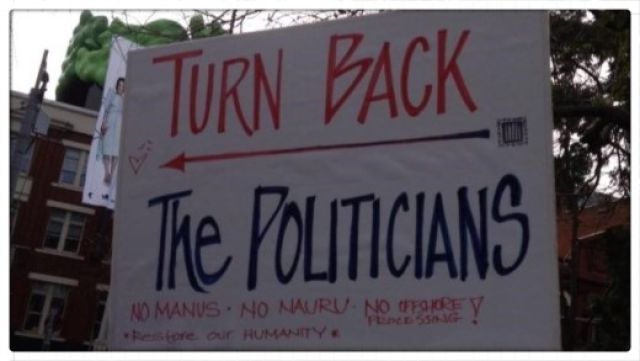
The case of 153 asylum seekers from Sri Lanka taken into Australian custody at sea returned to the High Court on July 18. Due to government secrecy, court proceedings have so far been the only reliable source of information about what is happening to the group.
Documents submitted to the High Court on July 17 revealed further details about the conditions in which 153 Tamil asylum seekers are being held. Lawyers representing 86 of those taken aboard an Australian Customs ship but not brought to Australia say the asylum seekers have not been able to make any formal refugee claims.
WHERE ARE THEY?
Their exact location is still unknown. Before the High Court challenge, immigration minister Scott Morrison refused to even confirm the group existed, staying secret on the basis of “operational security”. Once the court forced him to confirm they were in Australian custody, he refused to reveal more because “the matter is before the court ”.
Neither the United Nations nor the Senate have been able to find out more about what is happening to them. The Refugee Action Coalition believes they were transferred to the ACV Ocean Protector, a Customs ship reportedly set up to hold 120 extra passengers.
The court document has now revealed more. It said the women and children, including a two-year-old, are being held separately to the men in windowless locked rooms on the ship.
“They have no freedom of movement,” the Sydney Morning Herald reported. “[They] can only leave their rooms in the presence of those guarding them, and do not know who the guards are, the document says.
“It also reveals that their possessions, including any mobile phones, were seized when they were detained, and asserts they are being denied 'reasonable access' to legal advice.”
The Guardian said the document also revealed “they have had no opportunity to deliver their protection claims – despite all claiming to be refugees – and had no access to a qualified translator despite almost all being unable to speak English”.
WHO ARE THEY?
The document also confirmed that all those on board are Tamils, most of whom likely have legitimate refugee claims. Tamil Refugee Council spokesperson Aran Mylvaganam told the ABC that 11 of the 153 had been tortured by the Sri Lankan military.
"They fled Sri Lanka to a refugee camp in India and from there got on a boat and came to Australia,” he said. “If they are handed over to the Sri Lankan authorities we are certain their lives are in danger.
"Those who have been tortured in the past are at higher risk of facing more problems of the Sri Lanka intelligence agency. We are very worried.
"We have now got more information about these refugees and we know that if we don't keep an eye on them, the Sri Lankan authorities will torture them."
At least 37 of those on board are children aged between two and 16.
WHERE WILL THEY END UP?
The lawyers acting for the refugees say they are challenging the legality of Australia sending them back to Sri Lanka or to offshore detention on Manus Island or Nauru. So the outcome of the case will determine this.
After issuing an injunction stopping the forced return of the asylum seekers to Sri Lanka, the High Court ordered the government to give 72 hours' notice before any deportation.
Prime Minister Tony Abbott said he does not intend to turn them over to the Sri Lankan navy. But the government has already handed over a group of 41 asylum seekers to Sri Lanka, where the 28 men, four women, seven boys and two girls now face criminal charges.
However, Sri Lanka's high commissioner to Australia, Admiral Thisara Samarasinghe, told ABC News 24 his country would not take the group: "I can categorically deny and reject any plans of Sri Lanka to take over the suspected, speculated, presumed asylum seekers coming from India.”
India has also reportedly shown resistance to accepting the refugees back. More than 100,000 Sri Lankan Tamils live as refugees in India, many in camps described by aid workers as “poor to adequate”. IRIN news say some refugees “live in thatched huts, others in small cement block houses; water and sanitation are problematic in the more remote camps”.
Sri Lankan Tamils living outside the camps generally live in poverty without citizenship rights or welfare support.
Like Green Left Weekly on Facebook and follow us on Twitter.